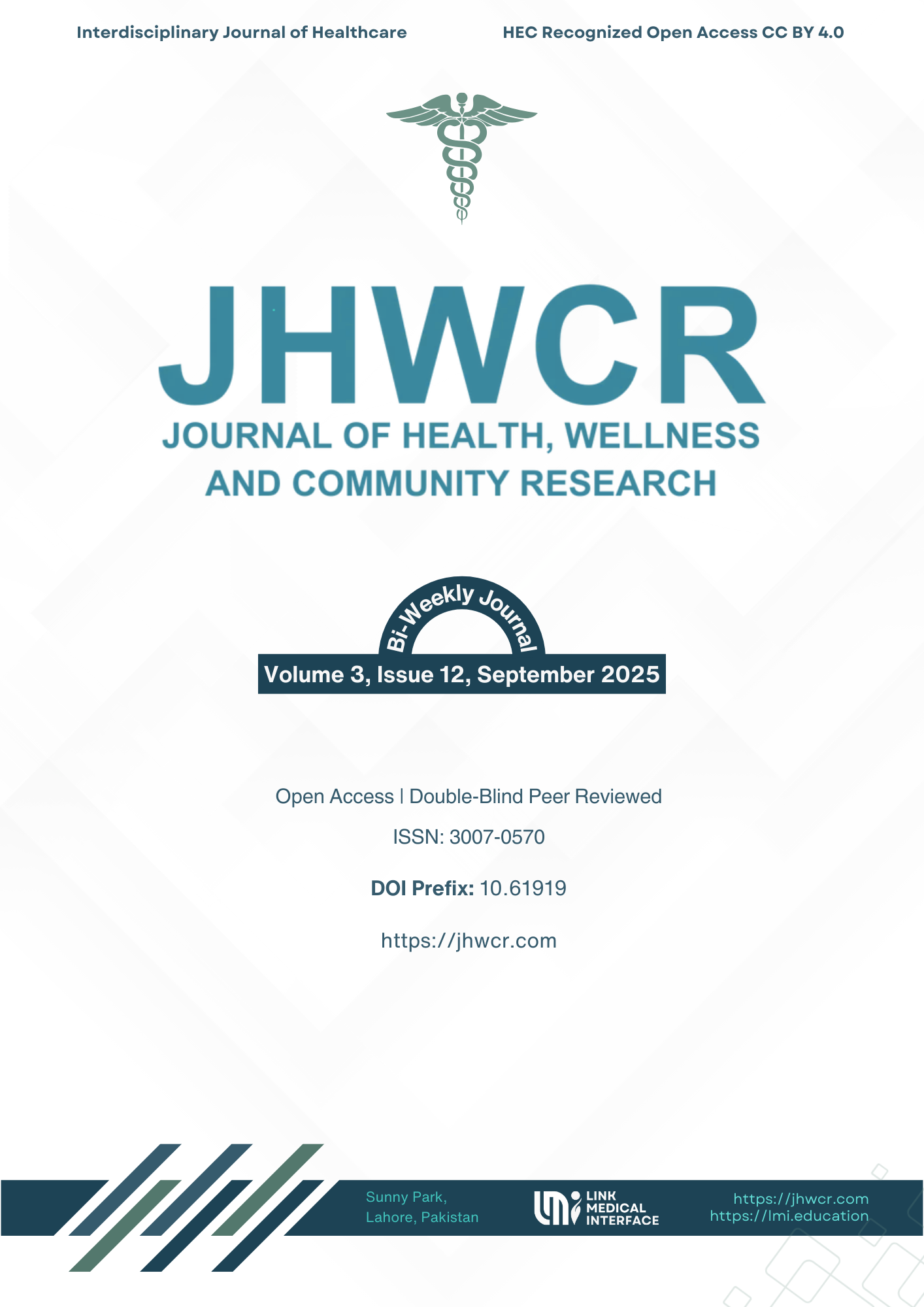Demographic Profile and Health Risks of Leather-Industry Workers in Sialkot: A Cross-Sectional Study
DOI:
https://doi.org/10.61919/bvyzj368Keywords:
Leather industry, tannery workers, occupational health, asthma, musculoskeletal disorders, hypertension, PakistanAbstract
Background: Occupational exposure in the leather industry poses significant risks due to contact with chemicals, poor ergonomic conditions, and inadequate protective measures. Despite the global burden of occupational disease, workers in Sialkot, Pakistan’s tannery sector remain under-studied, limiting the development of targeted interventions. Objective: To describe the demographic characteristics, educational attainment, and self-reported health conditions of leather-industry workers in Sialkot and compare these baseline findings with non-exposed controls. Methods: A cross-sectional observational study was conducted between June and August 2024, enrolling 40 tannery workers and 40 age-matched male controls without industrial exposure. Demographic and health data were collected via interviewer-administered questionnaires, and blood, hair, and nail samples were obtained using standardized protocols. Descriptive statistics summarized group characteristics, while chi-square and t-tests assessed differences between groups. Results: Workers were significantly older (41.5 ± 10.4 vs. 27.0 ± 6.3 years, p < 0.001) and reported longer employment duration (mean 19.7 ± 11.6 years). Educational attainment was markedly lower among workers, with 20% reporting no formal education compared to none in the control group (p < 0.001). Health conditions were more prevalent among workers, including asthma (17.5%), musculoskeletal pain (12.5%), and hypertension (10.0%), whereas 80% of controls reported normal health. Conclusion: Leather-industry workers in Sialkot demonstrate lower education and higher chronic health burdens than controls, emphasizing the need for occupational health surveillance, preventive interventions, and future biomarker-based studies.
Downloads
Published
Issue
Section
License
Copyright (c) 2025 Muhammad Awais, Saima Ashraf, Manahal Sughra, Asad Shabbir, Abida Shehzadi, Hanna Ehsan (Author)

This work is licensed under a Creative Commons Attribution 4.0 International License.


